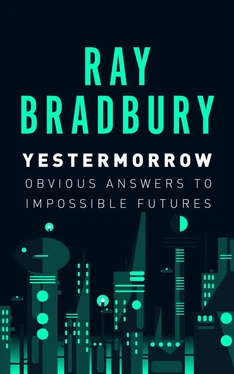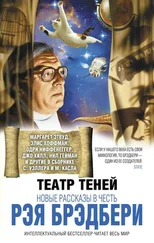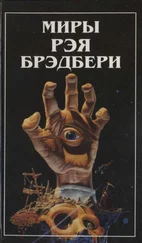But—with familiar architectures!
For what will have happened, of course, as with the westering of Eastern seaboard folks in the mid-nineteenth century, is that people took their architectures with them. As the Europeans spilled over Kansas and died across Arizona, and survived in California, their clapboard houses and picket fences came along. In their dreams, anyway, and in their heads. So when they spat nails and wielded hammers and cut down trees in Sacramento, lo and behold! They re-created Cape Cod and Worcester, Massachusetts.
So, too, as our space travelers go backward and backward down the light spirals toward Earth, they will retrace the dreams of their forefathers who, as they footprinted Mars or named nameless planets far beyond, put up a miniature Empire State Building here, or roofed a French chateau there, along with all the hardware stores, druggerias and pizza palaces that inevitably dog the heels of any caravansary, be it fire rocket or camel.
So on their long day’s journey through night, our vacationers will indeed find the familiar architectural faces of Rome here, Venice there and Waukegan, Illinois, just beyond. So the journey will be a journey not only through space but through time and all the ways we had of living and seeing ourselves in shapes and sizes, in colors and textures, most of them brand new, on Mars or wherever we could make a lean-to and turn it into a Southern Manse or Northern Castle.
All of this, of course, because in the far traveling we will accomplish, we will be forced by time and distance and memory, which hurts, to resurrect the dead in order to go on living. The towns we loved as Earth children will be the towns, sometimes larger, sometimes smaller, that we will facade across any halfway-habitable satellite or world. We will carry along stained-glass windows and build entire houses around them. We will tote a brick from the Via Veneto and, halfway to Andromeda, which is too far by several billion years; we will put up an awning and two chairs, and wink at passing Beasts.
In sum, we will travel in 2484 much as we have done in our time, to revisit the Past that strengthens our Present before we turn back to the sometimes uncertain Futures awaiting us.
And as we travel back down through the universe, we will revisit the entire history of mankind. We will cross paths with the vast firework calligraphies we left behind with our rocket exhausts on our way to seeding star worlds with our harvest children.
And depending on which national or ethnic group settled this world or that, we will find the whims and fancies and late-night nostalgias of Arabs who built mosques, or Swiss who cobbled up fake Alps on planets as pancake-flat as Kansas, or Japanese who left a Shinto shrine and a robot factory behind as they said farewell.
Space and the planets in it, light-years apart, will resemble the back lot of a motion picture studio, with its cross-pollinated structures and its ramshackle remembrance.
And arriving back on Earth for what might well be our last visit, we will tour Canaveral, where the gantries, still standing, tossed our flags to the Moon. Then, we’ll go see New York, rebuilt in 1999 and again in 2050, the year they blew up every other block of ugly buildings and planted gardens in their place. The neatest real-estate trick of the age! And then on to Chicago, which finished its rebuilding in 2020 and at last was beautiful. And Los Angeles, which went on growing into the twenty-second century and still had no center.
And then on to Moscow, which finally accepted the true revolution of the twenty-first century: technology.
A trifle of politics but a huge serving of the automobile, the train, the jet, the Xerox and the Fax, the radio, the TV, the videocassette and the telephone instead of the dull hammer and the blunted sickle. Moscow with architectures, by some miracle at last, somewhat lovely. Lovely, wakened from the tomb not long after some democratic-revolutionary kid’s laser-beam toy melted Lenin in his ice-locker to simultaneously free the glacier landlocked population.
But why go on? Obviously, Moscow by A.D. 2233, wasn’t a bad place to visit. You wouldn’t want to go there summers because there are too many American tourists, but…
There you have the grand tour, 2484 style. Back down in time, to a mostly empty Earth, because everyone couldn’t resist heading out and up—or to the New West, as it was called. And the empty cities began to be taken by grass and dust, as the inhabitants of New Earths in separate star systems came back for reunions here in Nantucket or Bombay. Home but no longer home. Mother but no longer mother.
And we turn around and blast back off, up past the Moon and its abandoned colonies, and Mars and its Martians (all with strangely familiar Cherokee faces), we will fix a last stare at the bloodshot eye of Jupiter, ricochet through Saturn’s rings, then head for our home away from home.
What a time and tour it will be, far beyond 1984, which turned out to be a bore and not Big Brother after all.
We, the hyper-ventilating generation, bursting with star-seed, can hardly wait to explode up out-away, so we can come back on a lightship trek for a strange visitation, a peculiar vacation.
And if not I, or you, or our children—who?
1984
OF WHAT IS PAST, OR PASSING, OR TO COME
Of what is past, or passing, or to come,
These things I sense and sing, and try to sum.
The apeman with his cave in need of fire,
The tiger to be slain, his next desire.
The mammoth on the hoof a banquet seems,
How to bring the mammoth down fills apeman’s dreams.
How taunt the sabertooth and pull his bite?
How cage the flame to end an endless night?
All this the apeman sketches on this cave
In cowards arts that teach him to be brave.
So, beasts and fire that live beyond his lair
Are drawn in science fictions everywhere.
The walls are full of schemes that sum and teach,
To help the apeman reach beyond his reach.
While all his ape-companions laugh and shout:
“What are those stupid blueprints all about?!
Give up your science fictions, clean the cave!”
But apeman knows his sketching chalk can save,
And knowing, learning, moves him to rehearse
True actions in the world to death reverse.
With axe he knocks the tiger’s smile to dust,
Then runs to slay the mammoth with spear thrust;
The hairy mountain falls, the forests quake,
Then fire is swiped to cook a mammoth steak.
Three problems thus I solved by art on wall,
The tiger, mammoth, fire, the one, the all.
So these first science fictions circled thought
And then strode forth and all the real facts sought,
And then on wall new science fictions drew,
That run through history and end with… you.
Inspired by a line from W. B. Yeats
Architect Jon A. Jerde, AIA
Ray Bradbury’s incredible accomplishments as a novelist, playwright and entertainer are very well known to most. However, it should not be overlooked that his visions about urban design, placemaking and planning are equally astounding.
Simultaneous efforts by the Los Angeles Planning Department, Community Redevelopment Agency (CRA), the Urban Design Advisory Coalition (UDAC), and the Mayor’s Blue Ribbon Committee L.A. 2000 Study all concluded that what will make Los Angeles comprehensible, more humane and lively, is precisely what Ray told us to do twenty years ago.
In his chapter “The Girls Walk This Way; The Boys Walk That Way” Ray gives us his observations about the forgotten pleasures of urban life, abandoned opportunities and a prescription of how to have it all using what we’ve already got.
Two of his other chapters, “Aesthetics of Lostness,” about the importance of eccentricity, and “Yes, We’ll Gather at the River,” are all about connections. Together, they allude to a new art form/science that is just waking up in the minds of alert urbanists and architects all over the world.
Читать дальше











